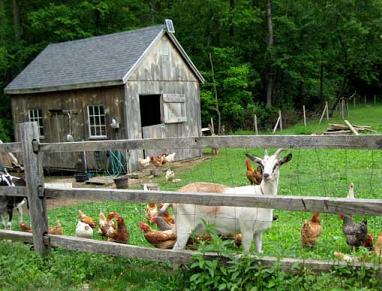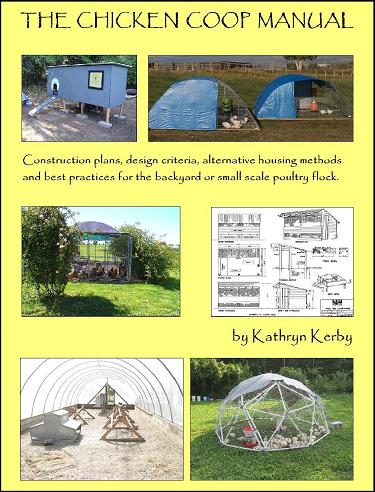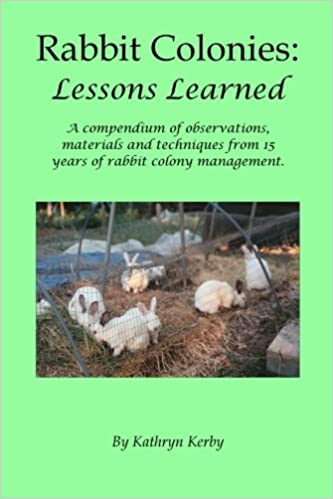Kick the Feed Bag Habit
February 3, 2011

With the announcement of deregulated GE alfalfa spreading around the various livestock communities, many folks are wondering for the first time how they can go about raising their own feed. After all, the vast majority of small scale livestock owners have been working out of a feed bag for the past 50 years if not more. Yet that is not the norm for the bulk of small family farming history. It used to be very commonplace for folks to either raise their own feed on their own place, or partner with neighbors to raise feed in exchange for meat, dairy, eggs and other livestock products. If there is a silver lining to this whole GE nonsense, it would be that small scale producers are once again looking at how to provide their own feed.
But how? For most of us, our feed comes in only a few forms - baled hay, bagged silage or haylage, and a wide variety of pelleted combination diets with a myriad list of ingredients. Trying to figure out how to grow our own hay, create our own silage or haylage, or recreate those pelleted feeds can seem daunting. On the one hand, yes it is a complex business. On the other hand, we don't have to recreate those pellets, per se. We just have to recreate the proper ratio of nutrients within them.
Switching species and authors, Jerry Belanger devotes over 20 pages to the topic in Raising Milk Goats the Modern Way
For those who want a much more thorough immersion in the science of livestock nutrition, there's few better than Morrison's Feeds and Feeding: A Handbook for the Student and Stockman
A third "oldie but goodie" is the classic Small-Scale Grain Raising: An Organic Guide to Growing, Processing, and Using Nutritious Whole Grains for Home Gardeners and Local Farmers, 2nd Edition
If those books are old enough to make you squirm, and you're concerned you're missing out on new information, never fear. A variety of books have come out within the last 10-15 years about pastured livestock production, and incorporating traditional feedstocks into livestock rations to provide hay alternatives throughout the year. Joel Salatin has been instrumental in experimenting with, and writing up, pastured production for cattle, poultry, and rabbits. His books include You Can Farm: The Entrepreneur's Guide to Start & Succeed in a Farming Enterprise
Additionally, Jim Gerrish has a pair of books that should be in the hands of every ruminant owner in the country, along with any poultry producer or hog producer interested in pasturing their animals. His first book, Management-Intensive Grazing: The Grassroots of Grass Farming
If you are concerned enough about GE crops that you want to grow your own, or perhaps you just want to see what's possible, there's plenty of information out there to get you started. How far you take it, and how much of your own feed you end up raising for yourself, is up to you. If nothing else, these sources of information would help you reach out to nearby producers that you can partner with. That can also be a potent combination, because you'd get the feeds you need, raised in ways you approve of, for far less than retail. And nearby growers are often delighted to work with clients who know what they want and will buy in bulk every year. Even if you don’t care about GE alfalfa, I heartily encourage you to explore some of these options. We don't need to live out of the retail feed bag. We never really did. And now the documentation is better than ever on how to raise our own feeds. To quote one of my favorite poetic passages, I encourage you "to strive, to seek, to find, and not to yield", in your efforts to secure wholesome non-GE foods and feeds. It can be done.
Our Successful Farming and Ranching Books

We released our very first self-published book. The Chicken Coop Manual in 2014. It is a full color guide to conventional and alternative poultry housing options, including 8 conventional stud construction plans, 12 alternative housing methods, and almost 20 different design features. This book is available on Amazon.com and as a PDF download. Please visit The Chicken Coop Manual page for more information.

Rabbit Colonies: Lessons Learned
We started with rabbits in 2002, and we've been experimenting with colony management ever since. Fast forward to 2017, when I decided to write another book, this time about colony management. The book is chock-full of practical information, and is available from both Amazon and as a PDF download. Please visit the Rabbit Colonies page for more information.
The Pastured Pig Handbook
We are currently working on our next self-published book: The Pastured Pig Handbook. This particular book addresses a profitable, popular and successful hog management approach which sadly is not yet well documented. Our handbook, will cover all the various issues involved with pastured hog management, including case studies of numerous current pastured pig operations. If you have any questions about this book, please Contact Us.

Weblog Archives
We published a farm blog between January 2011 and April 2012. We reluctantly ceased writing them due to time constraints, and we hope to begin writing them again someday. In the meantime, we offer a Weblog Archive so that readers can access past blog articles at any time.
If and when we return to writing blogs, we'll post that news here. Until then, happy reading!




